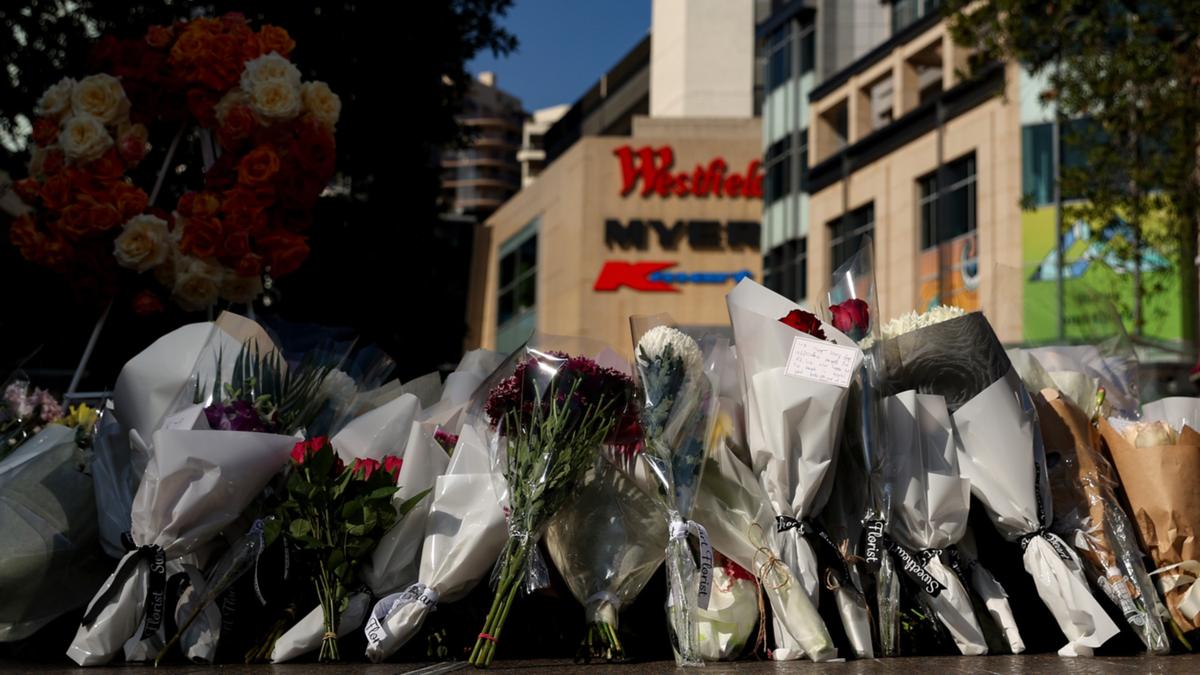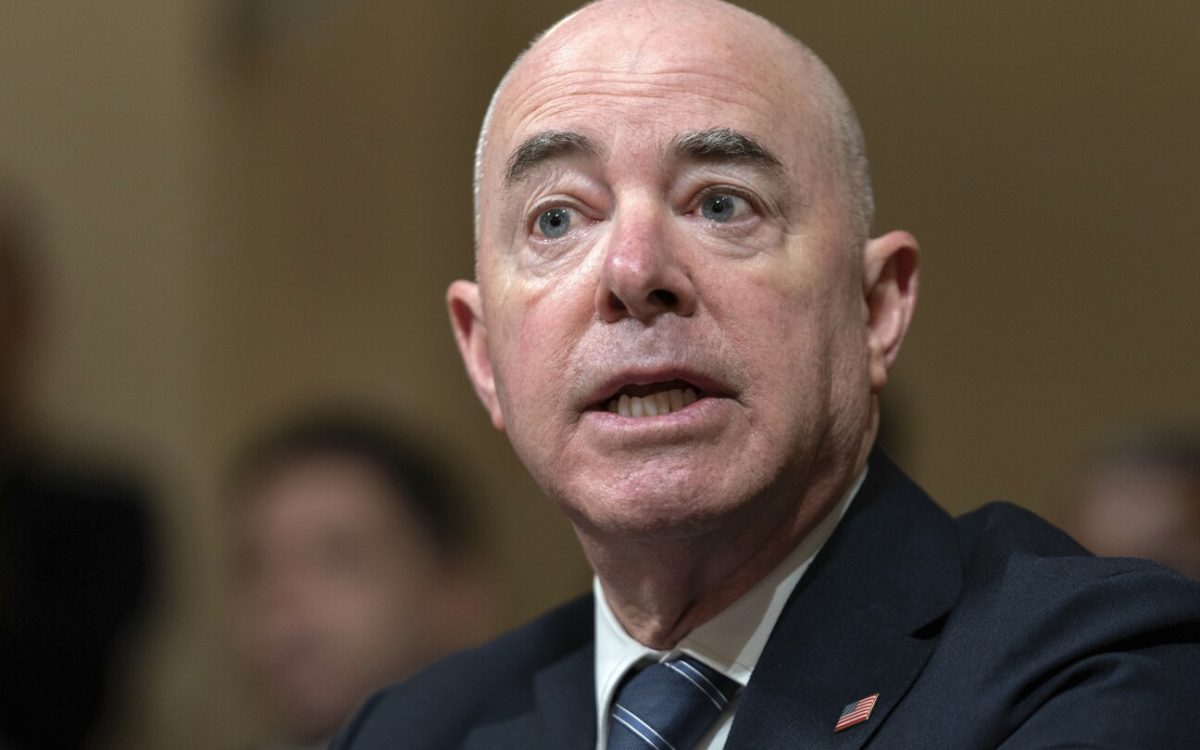Nearly 2,000 professionals earning HK$10 million (US$1.27 million) or more a year successfully applied to move to Hong Kong under a government scheme to attract talent in the past 12 months, an influx experts said could create more job opportunities for all. The Security Bureau told lawmakers on Wednesday 46,497 applications were approved under the Top Talent Pass Scheme in the 2023-24 financial year. Under one category of the scheme, candidates must have earned at least HK$2.5 million over the past 12 months to be eligible, and of the 11,779 people approved, 1,926 had made HK$10 million or more. According to the bureau, 2,162 successful applicants had earned between HK$5 million and HK$10 million in the preceding year. The government introduced the Top Talent Pass Scheme in December 2022 to lure more professionals to the city. Successful applicants are offered a two-year visa, which can only be extended if the holders are employed or set up a business in Hong Kong. The scheme is also open to graduates from the world’s top universities as selected by authorities who have been working for three of the past five years. Those graduates with less than three years of experience can also apply, but the number accepted is capped at 10,000 annually. For the two categories that require academic qualifications, 26,169 and 8,549 applications were respectively approved in 2023-24. The bureau also revealed 52,876 visas or entry permits for dependants were also approved for all categories in the same period. Authorities said a survey carried out last November of successful applicants who had been in the city for more than six months found more than half were employed. It found 31 per cent were working in the financial services industry, followed by 18 per cent in innovation and technology, and 17 per cent in commerce and trade. About 8 per cent of them worked in insurance or brokerage services. Lawmaker Shang Hailong, who chairs the Hong Kong Top Talent Services Association, said most of the approved high-income applicants were entrepreneurs and C-suite executives in both traditional industries such as retail and manufacturing, and new tech companies, such as those focused on artificial intelligence or biotechnology. “They are not just from the mainland, but also from around the world,” he said. Professionals recruited under Hong Kong talent scheme earning HK$50,000 a month According to Shang, their motivation for applying for Hong Kong visas stemmed from their recognition of the city’s high educational standards, which would benefit their children, and the perceived value of Hong Kong passports. “Particularly, some of them attached great importance to the city’s bridge role between the mainland and the world,” he said, adding that some of the professionals had lost touch with overseas business contacts during the three-year pandemic. Shang also referred to a survey done by his association that found about a fourth of the talent scheme newcomers expressed a willingness to set up companies in Hong Kong. “If that all translated into reality, it could result in the creation of around 1,000 new companies in the city by mid-2025, thereby generating employment opportunities in the local labour market,” Shang said. Alexa Chow Yee-ping, the managing director of AMAC Human Resources Consultants, agreed that the high-income applicants could create a significant number of job opportunities. Language barrier, living costs pose hurdles to mainland talent eyeing Hong Kong The arrivals could be C-suite executives, directors or experts in certain fields who would require a team of managers, officers, assistants or researchers numbering from a few dozen to possibly hundreds. “If they come from industries or areas that Hong Kong lacks such as scientific research, information technology or artificial intelligence, it will further alleviate the shortage and boost the development of these sectors,” she said. But Chow said the number of successful applications might not represent the actual number of people settling in the city. The effectiveness of the scheme depended on whether measures were in place to help arrivals adapt to the local culture, which could encourage them to stay in the long term, she added. Gary Ng Cheuk-yan, a senior economist at Natixis Corporate and Investment Bank, said the latest figures were a positive signal that Hong Kong remained attractive to high-income professionals. “Having a large amount of high-income talent being imported to Hong Kong could also drive various kinds of consumptions, such as housing, which can boost the economy,” Ng said. Figures from the Labour and Welfare Bureau on Wednesday showed that 43,992 successful applicants of the scheme came from mainland China. According to the Immigration Department, 35,583 people arrived in Hong Kong through the scheme in 2023, among 91,631 from all talent initiatives.
Bondi Junction attack: Shopping centre opens its doors for day of reflection after stabbing massacre
The West Australian Perth Now Click to open navigation Breaking News Western Australia National World Technology Opinion Weather Camera IconWestfield Bondi Junction shopping centre has opened its doors for a day of reflection after the stabbing massacre which left six people dead and 12 others in hospital. Credit: Brendon Thorne/Getty Images breaking Bondi Junction attack: Shopping centre opens its doors for day of reflection after stabbing massacre Sarah Blake The Nightly April 18, 2024 9:00AM Topics Share to Facebook Share to Twitter Email Us Copy the Link Your Local News Share to TwitterShare to FacebookShare to InstagramShare to YoutubeEmail UsGet Digital Edition Perth Now Email UsNewsletter Chevron Down IconSubmit story tip Camera IconSubmit photos Get Digital EditionDigital edition Chevron Down IconBack to top
Man Shoots Carjacker Who Then Kills Him
Read the full story on The Auto Wire Carjackings are scary situations since, as we’ve been warning for some time, many carjackers are willing to use deadly force. While there’s a certain amount of risk involved in confronting a regular car thief, with carjackers it’s much higher. One man in North Carolina found that out, paying the ultimate price. Watch two karate teachers beat up some would-be carjackers. In shocking footage which was uploaded to X, but we can’t show here for obvious reasons, a man is shown approaching a work truck as another man is getting inside. The man who has a high visibility vest on and most likely is the one who should be driving the pickup tries stopping the other man from getting into the cab. That’s when shots ring out and we see the man in high visibility vest has a handgun out, pointed at the carjacker. After the man fires a few rounds, the carjacker throws the truck into reverse. The victim, perhaps sensing what’s coming next, yells at some nearby men to run as he dashes off himself. Sure enough, the work truck comes barreling back into the frame, angles right at the victim, and hits him so hard he goes flying through the air. According to a WYFF report he didn’t survive. That report indicates the shocking exchange happened on March 14 in Lumberton, North Carolina. This just goes to show you don’t have to be in a big city for this sort of thing to happen. Reportedly, the carjacker originally got involved in a hit-and-run crash at a gas station. When Good Samaritans like this victim stopped to help as the suspect tried carjacking another vehicle, the suspect decided to take the truck belonging to the man in the high visibility vest. That man, who was hit and killed, was identified as 38-year-old Jonathan Adam Lecompte. A report from WMBF indicates he worked for NCDOT over 16 years. Our hearts go out to his family. As for the suspect, he’s been identified as 28-year-old Ricky Alex Driggers. He’s been charged with first-degree murder and several other charges. We’re not saying you should never confront a carjacker, especially when the victim is in duress. We are saying you need to be careful because many carjackers would kill you as soon as look at you. Stay safe out there, everyone. See the video for yourself here (warning: graphic). Images via dubslife1/X Join our Newsletter, subscribe to our YouTube page, and follow us on Facebook.
What does Springfield’s selective enrollment bill mean for Chicago Public Schools?
Illinois lawmakers are advancing a bill that would prevent Chicago Public Schools officials from closing any schools or making major changes to selective enrollment programs until a fully elected school board takes control in early 2027. The proposed legislation is the latest and most significant backlash to a declaration in December by Mayor Brandon Johnson’s Board of Education that it would no longer prioritize selective schools and would refocus resources to neighborhood schools that have faced years of cuts and under-funding. Johnson and his school board have sought to clarify this spring that the changing priorities don’t mean selective enrollment schools will face massive cuts or closure, and the intent instead is to provide neighborhood schools with some of the same programs available at selective enrollment schools. Board of Education President Jianan Shi has been in Springfield this week pushing for more funding for CPS to fill a massive deficit and help with transportation woes and migrant students. He has also warned lawmakers that the selective enrollment bill, likely to be called to the full House this week, will have “unintended consequences.” So what exactly does the bill call for, what is it in response to and how would it affect CPS? School closings moratorium Sponsored by State Rep. Margaret Croke, D-Chicago, House Bill 0303 initially would have prevented CPS from closing any schools with selective programs until Feb. 1, 2027 after the fully elected school board takes office. After lobbying from the Chicago Teachers Union and supporters, the bill has been amended to extend that protection to all CPS schools. Croke said the bill is in response to the Board of Education’s December resolution and the belief that officials should “wait for democracy” with a fully elected board before making potentially “irreversible decisions.” Johnson’s administration has not proposed closing selective enrollment schools. Doing so wouldn’t make sense politically or educationally — some of Chicago’s selective schools are among the best in the country. The bill would protect charter schools, however, which face an otherwise uncertain future under Johnson. A current moratorium on school closings expires in January 2025, when a partially elected school board will be sworn in. Board of Education Vice President Elizabeth Todd-Breland said at a board meeting Wednesday that the bill “in fact is a proposed remedy to a problem that actually does not exist” because school closings aren’t under consideration. “The small number of selective enrollment schools in the district are well-enrolled, they are well-resourced, and Chicago Public Schools and this Board of Education will continue to support these schools,” she said. Admission standards Perhaps more consequentially, the bill would prevent CPS from changing the “standards for admission” to any selective school. For instance, CPS reduced the length of the high school selective enrollment test to an hour last year to improve accessibility, particularly for students with disabilities who may have had trouble testing for three hours previously. CPS would have to halt those types of decisions. Some families have worried that Johnson’s administration could water down the enrollment process, fearing that the test score threshold could be lowered or testing could be eliminated altogether to effectively end the selective aspect of these schools. Critics of the bill, however, have warned it could prevent policy changes aimed at another target: diversifying these programs. For more than a decade, 70% of seats in selective enrollment high schools have been split up among four tiers of students based on socioeconomic factors, and kids in each group compete with each other based on grades and test scores. The remaining 30% go exclusively to kids who earn the most points in the admissions system, and they typically are mostly higher-income kids. Though he later paused the plan, CPS CEO Pedro Martinez proposed scrapping that 30% in 2022 and applying the tiered split to all selective seats to ensure more low-income students are admitted. There have been long-standing demographic disparities at some selective enrollment high schools, with Black students, kids from low-income families and those in special education particularly underrepresented compared to the district as a whole. The percentage of Black students in the most selective high schools has declined over the past 20 years. Todd-Breland said Wednesday that the bill would “codify racial and socioeconomic inequities in our most selective schools.” And she said it would sideline other communities that “regularly come to the Board with requests to examine their schools’ admissions and attendance policies” to address overcrowding and other enrollment issues. Croke reiterated that she “by no means [is] saying that selective enrollment schools are perfect,” but she believes any big changes should wait. “Obviously, I do want to point out that still selective enrollment schools are majority Black and Brown overall,” she said. “But I understand the conversation. “Those are decisions that still are being made by an appointed, unelected school board,” she said. “I understand that democracy is not convenient, as someone who has to get elected every two years. … But that doesn’t mean that we circumvent it.” Funding changes For the past decade, CPS schools have received a set sum per student enrolled, a system that research has shown has sent many majority-Black schools with declining enrollment into a downward spiral. CPS is by and large a choice district, particularly at the high school level, where about 75% of students don’t attend their neighborhood school. Some parents and community organizers have argued more families would be enticed to their neighborhood school if it had better programs. So CPS has started to roll out revamped budgets this month that set a baseline of offerings at schools and distribute resources not on enrollment numbers but based on the students’ needs in particular schools — like how many are unhoused, living in poverty, learning English or disabled. That’s similar to a system adopted by Illinois in 2017 for distributing money to school districts. It’s still unclear how selective enrollment schools are impacted by those budgets because CPS has not publicly released school-by-school information. But it’s likely that the system will redistribute resources to some extent from schools that have been adequately funded to schools that haven’t. The district doesn’t want one school with six art and music teachers and another with zero, so those effectively may be spread out. That type of plan is CPS’ fastest way to address the art and music teacher example without more revenue to add resources rather than redistribute. This bill, however, would mean that plan might have to be entirely re-examined if money leaves selective programs for neighborhood schools. The proposed legislation takes away the board’s authority to make budget decisions that result in a “disproportionate decrease in either the total amount or percentage of funds allocated” to selective schools. Croke said she supports CPS’ calls for more education funding — though it’s unlikely Springfield will grant that request this spring. In the meantime, she didn’t say how CPS could address underfunded schools without redistribution — she simply thinks those decisions should be left to an elected board. “They have been — unfortunately — I don’t think very transparent or forthcoming with a lot of the decisions that they are making,” Croke said. “And that miscommunication for those decisions I think have led parents and families and citizens of Chicago to have a lot of mistrust about what is going on.”
Kentucky spokeswoman: School is ‘distressed’ to hear of alleged sexual misconduct by ex-swim coach
LEXINGTON, Ky. (AP) — A Kentucky spokeswoman says the school is “distressed to hear disturbing allegations” of sexual assault by former swimming and diving coach Lars Jorgensen outlined in a lawsuit by two former team members and will cooperate fully with law enforcement. Former swimmer and assistant coach Briggs Alexander and an unidentified woman filed the suit on Friday in U.S. District Court against Jorgensen, the school and athletic director Mitch Barnhart, alleging sexual assaults including rape by the former coach. The suit also claims the school “purposefully” disregarded multiple credible reports of inappropriate sexual relationships and empowered Jorgensen to “foster a toxic, sexually hostile environment” and prey on, sexually harass, and commit horrific sexual assaults. A Wednesday release from university spokeswoman Kristi Willet stated that the school contacted law enforcement upon learning details from the initial article reported by The Athletic. It added that no one should be subject to the abuse described in the lawsuit. “Our top priority is the health and safety of our students and employees,” the release stated. “We have no tolerance for harm, harassment or abuse. “To our employees, students and the entire University of Kentucky family, we want to be absolutely clear: we do not tolerate these types of behaviors,” the release added. “We will do everything possible to ensure the safety and well-being of our students, faculty and staff.” The lawsuit also said Jorgensen’s predecessor, Gary Conell, did not follow up after being told of previous alleged misconduct by the coach at Toledo. It also said that Barnhart did not follow up an email about allegations or investigate them and hired Jorgensen; he’s also accused of intentionally concealing the allegations. Barnhart said Sunday that he couldn’t comment on the matter because it is being litigated but noted, “We always want to have safety for our student-athletes, our coaches and our staff.” ___ AP college sports: https://apnews.com/hub/college-sports
Flyers at migrant camp show how the border is inflaming US politics
McALLEN, Texas (AP) — A humanitarian organization in northeastern Mexico said it did not create flyers urging migrants to vote for President Joe Biden that were filmed at its shelter in a viral video that sparked a firestorm of conservative outrage this week. Accusations that Resource Center Matamoros was encouraging noncitizens to vote gained momentum after online posts displayed Spanish-language flyers instructing migrants to vote illegally for Biden once they arrived in the U.S. The flyers contained the logo of the organization, but it was not clear who created or posted them. Videos showed them on the interior walls of portable toilets at the center’s shelter near Mexico’s border with Texas. Resource Center Matamoros founder Gaby Zavala told The Associated Press the organization doesn’t know who made the flyers and said her group “does not encourage immigrants to register to vote or cast ballots in the U.S.” The provenance of the flyers was still unknown Wednesday. They contained errors in spelling and grammar, and appeared to include verbatim paragraphs from the organization’s English-language website that were translated into Spanish using online translation software. Despite the flyers’ uncertain origin, unverified claims about them have proliferated online this week and came up during a congressional hearing Tuesday, when House Republicans raised them in their questioning of Homeland Security Secretary Alejandro Mayorkas. The episode reflects how rapidly claims related to the migrant surge at the border can spread and influence the political debate as the presidential election approaches. Former President Donald Trump and his allies have used the surge to say, without evidence, that Democrats are allowing migrants into country as a way to boost Biden’s re-election chances. Only U.S. citizens are permitted to vote in federal elections and historically the number of noncitizens caught attempting to cast a ballot illegally is extremely small. Images and videos of the flyers at the Matamoros center erupted online after the Heritage Foundation’s oversight arm posted them on the social platform X on Monday evening. The conservative think tank shared an image of one of the flyers, which was labeled as coming from Zavala and contained both the Resource Center Matamoros logo and another logo in Spanish reading, “all with Biden.” It also shared a video that showed multiple flyers posted inside portable toilets where migrants might see them. The letter misspelled the Spanish word for welcome, “bienvenidos,” as “bienvedinos.” It also contained minor grammatical errors in Spanish, including an incorrect tense (“mientras esperan” should be “mientras esperen”) and the United States in lower case (“estados unidos”). The text appeared to lift a paragraph from Resource Center Matamoros’ English-language website, reciting the first two sentences verbatim, but translated to Spanish. The flyer added two sentences — which do not appear on the group’s website — saying migrants need to vote for Biden. “This flyer obviously seeks to prey on unsophisticated illegals and encourages them to illegally vote,” the Heritage Foundation wrote on one of its social posts. Heritage also published a short audio clip of Zavala having a conversation with an unidentified male. After the male says he is trying to help as many people as possible before Trump, the presumptive Republican presidential nominee, gets re-elected, Zavala can be heard saying, “Believe me, we’re in the same boat.” The nine-second exchange did not include any further mention of voting or elections. Zavala did not answer detailed questions about the exchange and told the AP that her organization does not support political campaigns for or against candidates. She said such activity would be “outside the scope of our mission.” The Heritage Foundation did not immediately respond to a request for comment. As of Wednesday it was not clear when the video was shot, who created and posted the flyers, how long they remained inside the portable toilets or whether any migrants saw them. The think-tank credited the discovery of the flyers to a website that frequently posts about border issues, and whose founder regularly appears on streaming programs that promote conspiracy theories. The claims that Resource Center Matamoros was behind the flyers were shared far and wide online, amassing millions of views across social media platforms. Threats appeared on a pro-Trump website, calling for Zavala’s neck to be snapped and for members of her organization to be hanged. A flurry of partisan researchers online dug into the group’s background, trying to identify potential links to a variety of U.S. and left-wing campaigns and causes. The flyers briefly mentioned the Jewish humanitarian organization HIAS, on whose board Mayorkas once sat. That connection drove additional claims that both HIAS and the Biden administration were using the flyers to try to rig the election. HIAS told AP it did not produce the flyers, does not support their message and has not rented space from or had any ties to Resource Center Matamoros since 2022. “These flyers are a clear attempt to spread misinformation about HIAS’ work to support refugees,” its statement read. Biden campaign spokesperson Ammar Moussa called the flyers disinformation and said they should be labeled that way on social platforms and websites. Republican Reps. Marjorie Taylor Greene of Georgia and Dan Bishop of North Carolina brought up the flyers during a congressional hearing with Mayorkas on Tuesday, the same day as the House sent articles of impeachment against him to the Senate. Greene accused Mayorkas of “aiding NGOs (non-governmental organizations) to steal our elections through your budget.” She didn’t pause to allow him to respond. Mayorkas didn’t immediately respond on Wednesday to the AP’s request for comment. The claims exploded online as Trump and other Republicans are claiming that the surge of migrants at the country’s southern border increases the risk that some of them living in the country without documentation will vote illegally. When people in the U.S. register to vote, they confirm under penalty of perjury that they are U.S. citizens. Several states also verify that registration against federal and state databases. While there have been anecdotal instances of noncitizens casting ballots, various states have examined their voter rolls and found no indication of significant numbers of noncitizens voting in federal elections. Studies also have shown the incidence is exceedingly rare. ___ Associated Press immigration writer Elliot Spagat contributed to this report. ___ The Associated Press receives support from several private foundations to enhance its explanatory coverage of elections and democracy. See more about AP’s democracy initiative here. The AP is solely responsible for all content.
Air National Guard changes in Alaska could affect national security, civilian rescues, staffers say
ANCHORAGE, Alaska (AP) — Kristin Paniptchuk’s water broke on Christmas Eve at her home in the western Alaska Inupiat village of Shaktoolik, and then she began to bleed profusely. The local clinic in the tiny village of 200 people on the Bering Sea couldn’t stop the bleeding or the contractions brought on by a baby that wasn’t due for another two months. With harsh winds grounding an air ambulance from nearby Nome, medical staff called on their only other option: the Alaska Air National Guard. Five days after a military helicopter and then a cargo plane whisked Paniptchuk to an Anchorage hospital, she delivered her daughter Kinley, premature but healthy. Over the past year-and-a-half, Paniptchuk, whose daughter is now a toddler, has been thinking about how lucky she was. “I’m just really thankful that they were able to come and get me,” she said. “Who knows what would have happened if they didn’t?” The Alaska Air National Guard conducted 159 such missions last year in largely roadless Alaska, many during vicious storms. In one instance, a military helicopter flew nearly 660 miles (1,062 kilometers) to pick up a pregnant woman with stomach pains from an Alaska island 2 miles (3 kilometers) from Russia’s waters. Last month, two airmen armed with pints of blood parachuted into another western Alaska community to care for a woman experiencing internal bleeding because it was the fastest way to get there. Now, those rescues could be drastically curtailed as personnel changes take an outsize toll in a state more than twice the size of Texas, Guard leaders and members say. A nationwide move to balance the number of the top-earning positions among the Air National Guard across 54 state and territorial units means the Guard will soon convert many of Alaska’s highly paid Active Guard and Reserve members — who are essentially the equivalent of full-time active-duty military — to dual status tech positions, a classification with lower wages, less appealing benefits and different duties. Many say they will quit rather than accept the changes. The transition, leaders say, could cut the number of the Alaska Guard’s medical rescue missions to about 50 a year and also affect critical national security work in the state, located just across the Bering Strait from Russia. That work includes scanning for missile launches from Russia, North Korea and China; tracking spy balloons over U.S. air space; and flying a refueling plane for U.S. fighter jets that respond to Russian bombers near American airspace — something that’s already happened five times this year. “If we’re only watching the skies Monday through Friday and they launch a missile on Saturday, well, that’s failure,” said Alaska Guard commander Brig. Gen. Brian Kile. Alaska is slated to convert 80 members, or about 4% of its 2,200 personnel, to tech positions — the most in the U.S. The problem is that much of the Alaska Guard’s unique role — missions that require being on alert 24 hours a day, seven days a week — can’t be done by the tech positions, the Guard said. “They’re trying to make all of the units look equal, and the problem with that is they took no consideration of location and of mission into account when they did this,” Kile said. “To do that for Alaska is incredibly impactful.” Local leaders have met with National Guard leadership, hoping to change their minds about the cuts in Alaska. In a statement to The Associated Press, the Air National Guard said the staffing reset was “driven by the desire to achieve equity across all units resourced by the same program.” In past statements, Guard officials have said they attempt to address staffing imbalances where some National Air Guard units have more of the highly paid Active Guard and Reserve members than others. Alaska has spent years adding these personnel to support its work. Officials did not respond to emailed questions. Rather than take a pay cut, more than 80% of the 80 Alaska members whose jobs are being converted to tech positions have indicated they will leave the Guard, some for private sector jobs. Some of those who stay will lose more than 50% of their salaries, which in some cases translates to more than $50,000 a year plus benefits, making living in expensive Alaska a huge challenge. “You’re living in fear for the future,” said Sgt. Sharon Queenie, a Yup’ik Eskimo and Guard member who monitors the skies for errant aircraft or spy balloons. The single mother of three will see her $104,000 annual salary cut in half, which she said could force her to sell her house. Maj. Mark Dellaquila lives in North Pole, a small community near Fairbanks, with his wife and five children. He said he would lose $60,000 a year when his job — already unfunded — is converted to a tech position. The Pennsylvania native said he and his wife decided early on that Alaska would be their forever home. “We’re in Alaska trying to grow roots and raise our kids here and now have this seemingly arbitrary decision just yank all of those roots right out of the ground,” he said, choking back tears. “It’s hard.”
Yoruba Nation invasion a call to anarchy
In a rather bizarre turn of events, some members of the Yoruba Nation (Ominira Yoruba), a fringe separatist group, took up arms against the Nigerian state last weekend. The group invaded the Governor’s Office and the House of Assembly in Ibadan, Oyo State. It attempted to pull down the Nigerian flag and hoist the Yoruba Nation’s flag. This action was foiled by the police and other security agents. Without conceding defeat, their presumed leader, and one of the wives of the late Chief Moshood Abiola, winner of the June 12, 1993, presidential election, Modupe Onitiri-Abiola, proclaimed the secession of the Yoruba from Nigeria. However, popular leaders of the YN, Banji Akintoye and Sunday ‘Igboho’ Adeyemo dissociated themselves from the group’s activities. The PUNCH reported that the Oyo State Commissioner of Police, Hamzat Adebola, paraded 21 suspected agitators, including an alleged lecturer on Monday. The police described their offence as a treasonable felony and terrorism. The suspects should be thoroughly probed to garner intelligence and dismantle violent cells within and outside the state. They should be prosecuted according to the laws of the country. The foiled invasion goes against the longstanding tactful and intellectual stance of the Yoruba to pursue either restructuring or separation from Nigeria through peaceful means. The YN group led by Akintoye has constantly demanded separation through the media, peaceful protests, and enlightenment programmes on digital and traditional fora. It has pursued its agenda by garnering over 5 million signatures supporting separation since 2022. The PUNCH condemns violence in the pursuit of socio-political aspirations. But the invasion highlights the urgency of restructuring Nigeria. Unfortunately, violent agitations may soar in response to the authoritarianism foisted upon ethnic nationalities by the anti-federalist 1999 Constitution. The YN group is not the only one demanding secession from Nigeria: the Igbo, through the Indigenous Peoples of Biafra and other offshoots, are also aggrieved by the situation. However, its violent campaign on Igbo citizens and government assets has besmirched the struggle. It has made many areas in the region ungovernable. The YN agitators must not toe this path. Indeed, violence is not the answer. Separatist groups like the Irish Republican Army (UK) and the Basque Separatist Group (Spain) had to renounce violence to realise their objectives. Nigeria continues to wallow in dysfunction, dissension, fragility, and contradiction without true federalism. The citizens are multi-dimensionally impoverished while the elite continue to enrich themselves. Power and resources are domiciled in the centre. This leads to a primordial scramble for power there, the absence of critical infrastructure, and a lack of accountability to the people at the grassroots. Dialogue and constitutional change should be implemented to resolve the inherent inequalities, while federating units and nationalities should be granted ample autonomy to manage their affairs. The ease with which the separatists invaded the government house highlights the impetus for a robust state policing architecture. Nigeria remains unsafe. It grapples with 371,000 officers to police 223 million Nigerians. This must change.The political leaders must make determined efforts to achieve state policing. The nostalgia of the old Western Region and its legacy continues to evince the positive possibilities in autonomy and devolution of power from the centre. In the First Republic, the Western Region expanded the cocoa trade into a global resource and created a viable and enlightened populace through free education and healthcare policies. It established television and radio stations, tertiary institutions, and agricultural research centres. Unfortunately, weak, and centralised governance has displaced all the gains of that era. The Federal Government must allow the states to achieve their full potential through true federalism.
Escalate prosecution of naira mutilators!
WITH the swift arrest and prosecution of controversial cross-dresser Olarewaju Okuneye, alias Bobrisky, for naira mutilation, the Economic and Financial Crimes Commission has set the tone to restore the dignity of the national currency. A Federal High Court sitting in Lagos had on April 12 sentenced Bobrisky to a six-month jail term without an option of fine for abusing the naira. The EFCC is on the right path. It should seize the moment by escalating enforcement of the law on naira abuse by both the low and mighty. In line with this, the EFCC put on trial Pascal Okechukwu(Cubana Chief Priest) on Wednesday for tampering with and abusing the naira. After pleading not guilty, a FHC court sitting in Lagos granted him bail in the sum of N10 million with two sureties in like sum. In Nigeria, naira abuse – spraying, stepping on the currency, and squeezing it – is the order of the day. At weddings, funerals, birthdays, naming ceremonies, political rallies, and other social gatherings, Nigerians recklessly spray the naira. It is so chronic that while ATMs and banks dispense dirty, stinking naira notes to customers, roadside traders sell mint notes at parties and social functions. The deposit money banks are complicit in this; the Central Bank of Nigeria should seriously clamp down on them. According to Section 21 of the CBN Act 2007, it is an offence to abuse the naira. Bus conductors, market women, and auto mechanics maltreat the naira by squeezing it with oily and greasy hands. Many crumple it in their bags. Bank cashiers are also guilty: they deface the currency by writing on it! It is a culture that has refused to abate primarily because the offenders are not punished. In a decent society, Bobrisky’s sentencing should serve as a deterrent. But it is doubtful if it will, especially if the EFCC and other law enforcement agencies look the other way when influential people commit the offence. Attempts by law enforcement agencies and the CBN to make the citizens treat the naira with respect have been futile. For the CBN, the cost of printing the currency and managing it is astronomical. In a cash-dependent economy, sorting bad notes is a Herculean task for the DMBs. The CBN says it incurred a bill of N281.07 billion to print and distribute new naira notes in the four years to 2020. The Bobrisky sentence follows an earlier one. An actress, Oluwadarasimi Omoseyin, was sentenced to a jail term of six months with an option of a N300,000 fine by a Lagos court for naira abuse. After this, the law has refused to act in other cases involving VIPs. In a viral video, a monarch in Ogun State was seen spraying a fuji musician with wads of naira to mark the anniversary of his ascension to the throne. There was genuine outrage after the footage emerged in 2020 of the daughters of former President Muhammadu Buhari spraying the naira during the wedding ceremony of their brother. That same year, a son of the Director-General of the Department of State Services was captured in a video spraying an actress with naira notes. A minister’s son made headlines for the same reasons under Buhari. In a trending video, a governor was seen hauling bundles of naira at his supporters. Elsewhere, citizens treat their currency with respect. Nigerians must imbibe this. It is far better to give cheques or put notes in envelopes and give them to those celebrating than irresponsibly spraying naira notes. The CBN should sustain awareness on how to handle the naira, especially with conductors and traders. To make the campaign successful, the EFCC should not stop at the prosecution of Bobrisky, Omoseyin, and Cubana, it should bring all naira abusers to book promptly.
Bicara kes bekal tepung istana bermula
Oleh Fadley Faisal – BANDAR SERI BEGAWAN, 17 APRIL – Kes melibatkan tiga rakyat Malaysia yang menghadapi 45 pertuduhan bersubahat menipu Hyatt Borneo Management Services (HBMS), penyedia perkhidmatan yang berpangkalan di Istana Nurul Iman, telah bermula dengan pihak pendakwaan memanggil seorang pembuat roti untuk memberikan keterangan di Mahkamah Majistret, hari ini. Timbalan Pendakwa Raya Rozaimah binti Abdul Rahman dan Pendakwa Raya Atiyyah Abas telah memaklumkan semua pihak bahawa mereka telah memberikan salinan dokumen dan bukti forensik digital yang dimaksudkan sebagai bukti pendakwaan. Majistret Kanan Hajah Ervy Sufitriana binti Haji Abdul Rahman menangguhkan perbicaraan sehingga 24 April bagi membolehkan pemeriksaan dokumen-dokumen asal oleh pihak pembelaan sebelum memanggil saksi-saksi lain. Peguam Bela Ang Swee Kiang dari Tetuan Yu dan Chiew mewakili Sam Ying Kok dan Abdul Sani bin Abdul Mutalib diwakili oleh Sharah Abdul Hamid dari Tetuan ZS Legal manakala itu Juanita binti Dato Paduka Haji Jemat dari Messrs Fathan and Co mewakili Iskak bin Rahmat. Pertuduhan-pertuduhan berkenaan dikemukakan hasil siasatan yang dijalankan oleh Biro Mencegah Rasuah (BMR). Dalam penemuan mereka, Perusahaan Ala Haji Bolhassan, pembekal lama tepung kepada HBMS telah membekalkan tepung penaik jenama Dawn yang tamat tempoh kepada HBMS. Tepung berkenaan didakwa lebihan daripada tempahan yang dibuat oleh Perusahaan Ala Haji Bolhassan semasa pandemik COVID dan tidak terjual sehingga tarikh luput. Selepas sekatan COVID ditarik balik, syarikat itu menjual tepung yang telah tamat tempoh kepada HBMS. BMR melancarkan siasatan pada Jun 2022 di mana mereka menahan Pengurus Besar Perusahaan Ala Haji Bolhassan, Sam, 51; Cef Pastri HBMS, Iskak, 56; dan Pengurus Bahan HBMS, Abdul Sani, 56. Pertuduhan-pertuduhan menyatakan bahawa Sam bersubahat dengan Iskak dan Abdul Sani untuk menipu HBMS untuk mempercayai bahawa tepung Dawn yang dibekalkan dan dihantar oleh Perusahaan Ala Haji Bolhassan antara 1 Februari 2021 dan 1 Mac 2022 masih boleh digunakan apabila ia telah tamat tempoh. Dengan penipuan itu, HBMS mengarahkan dan seterusnya membuat pembayaran berjumlah $25,780.











